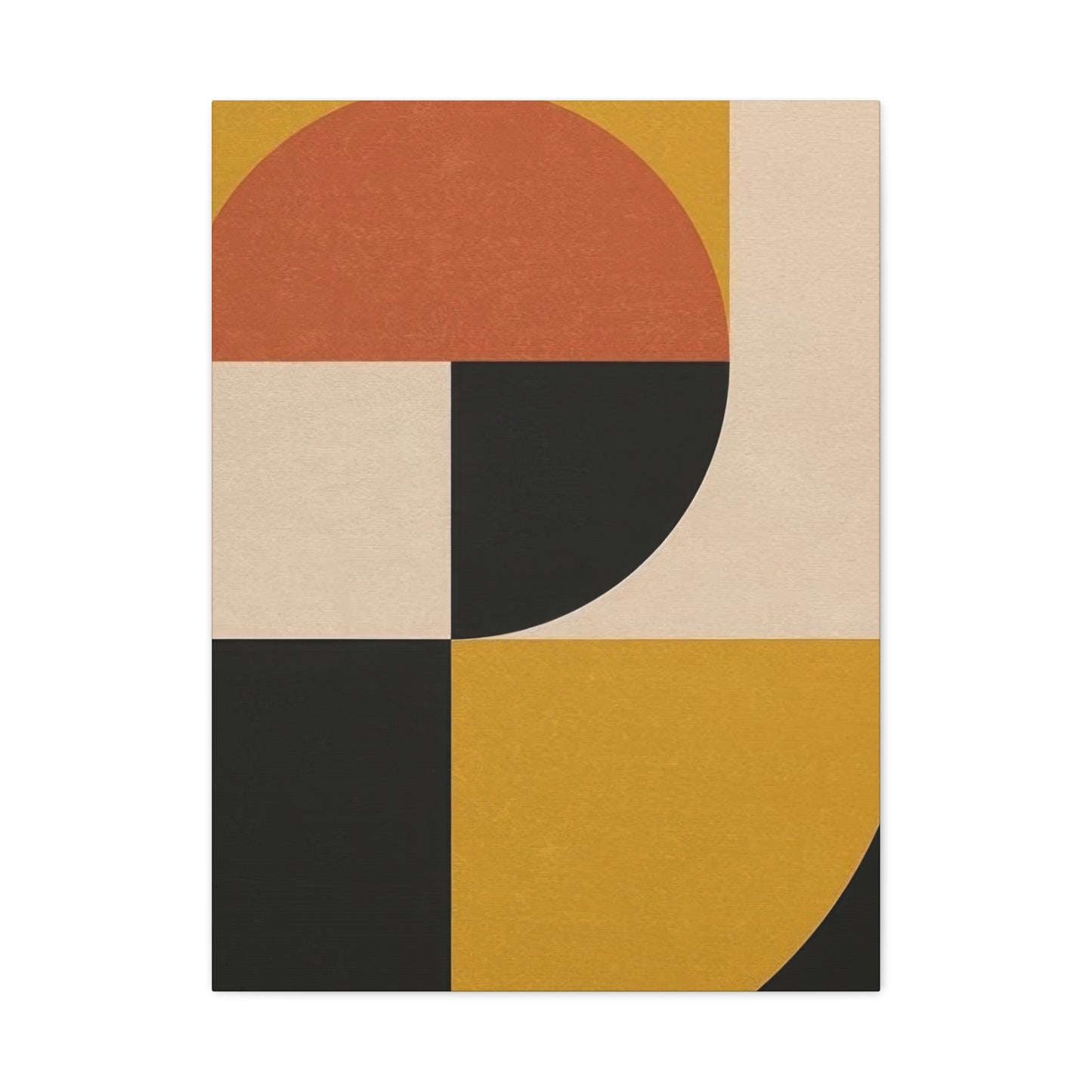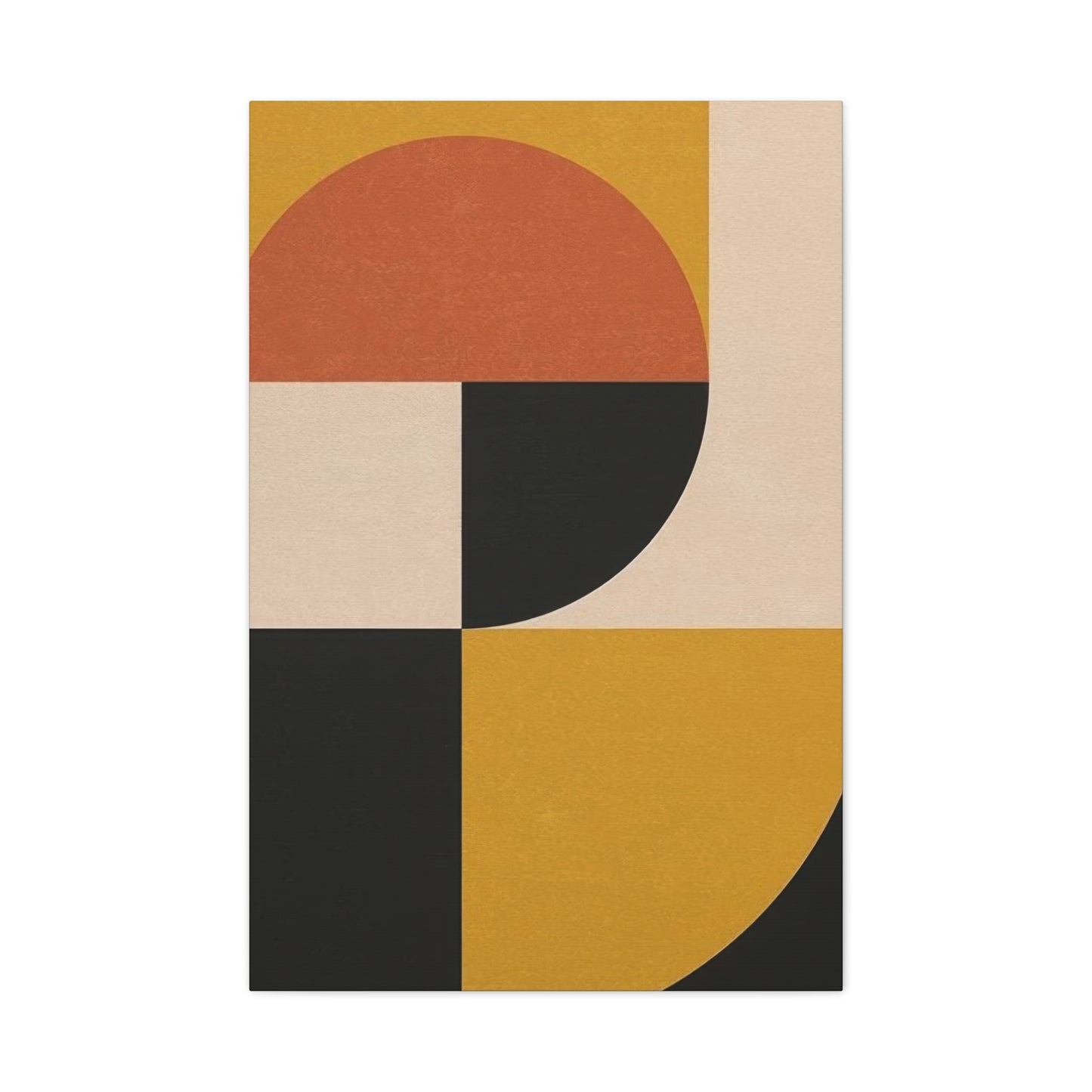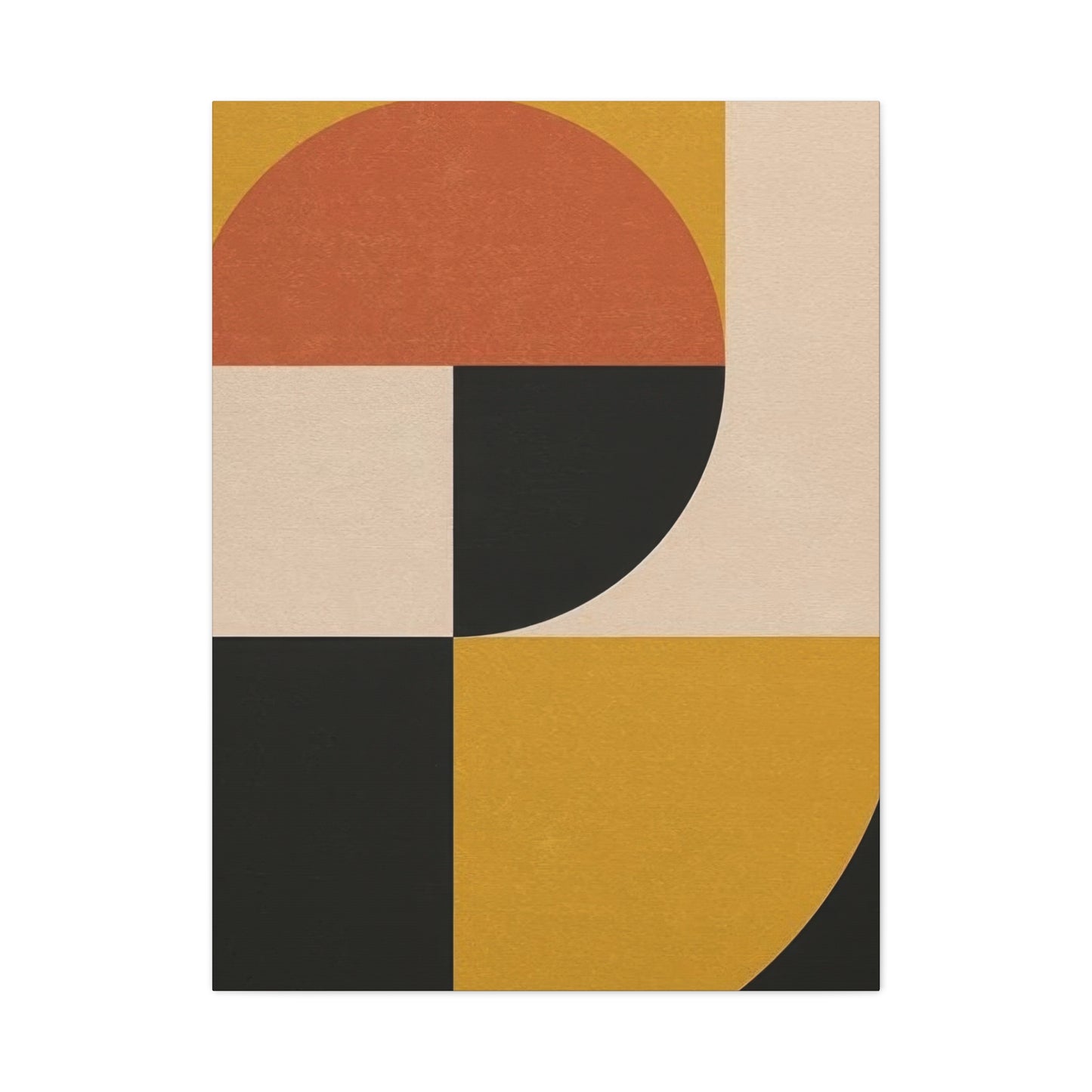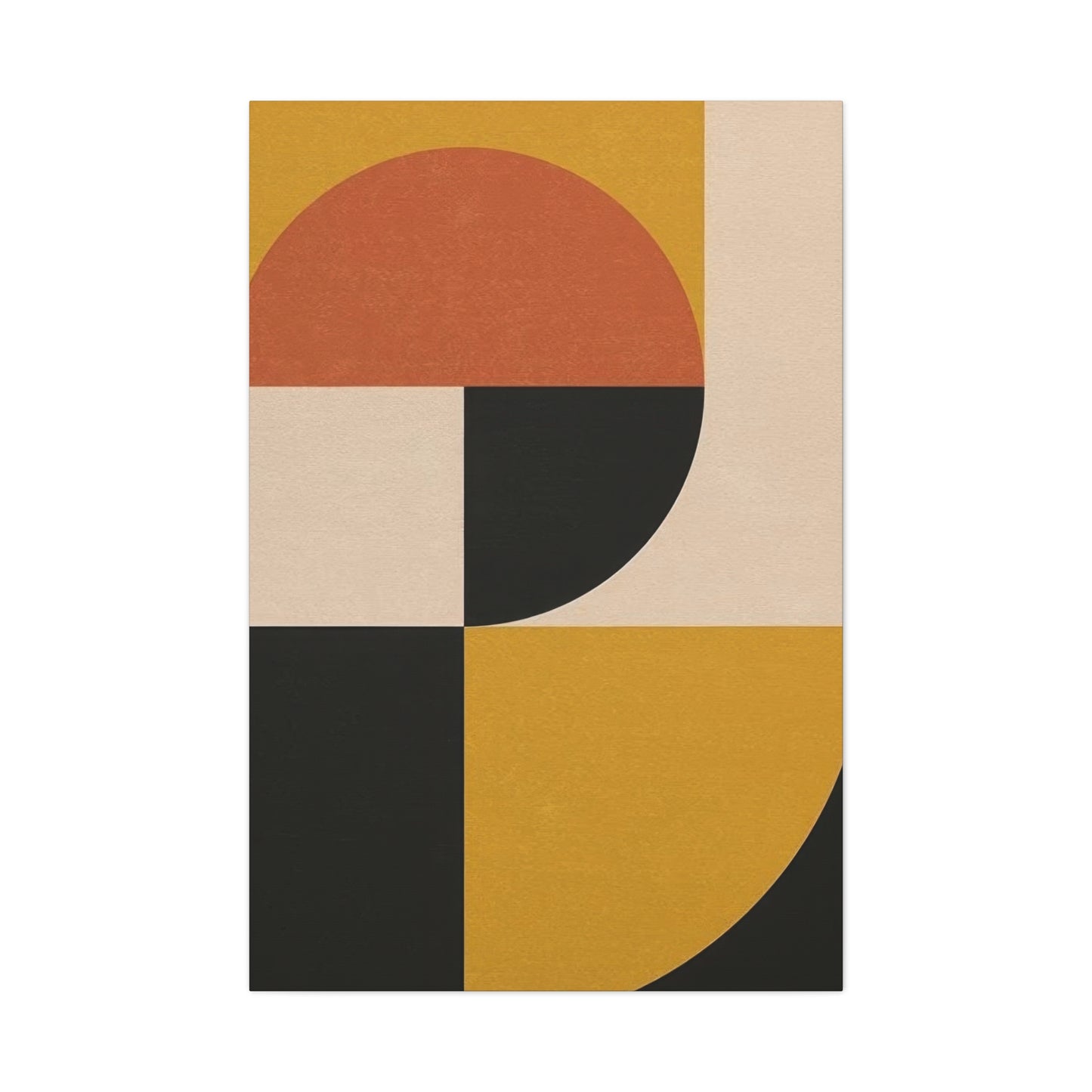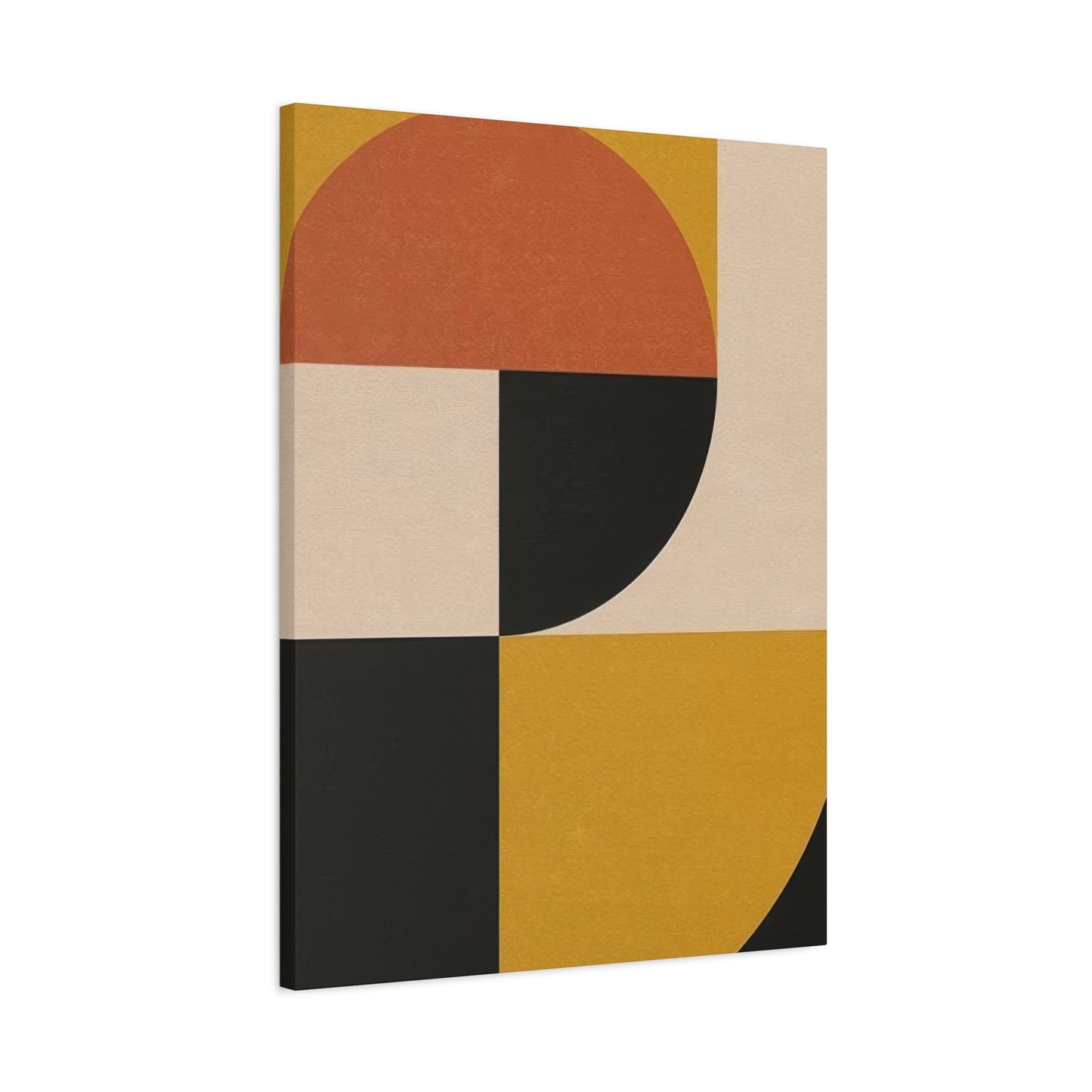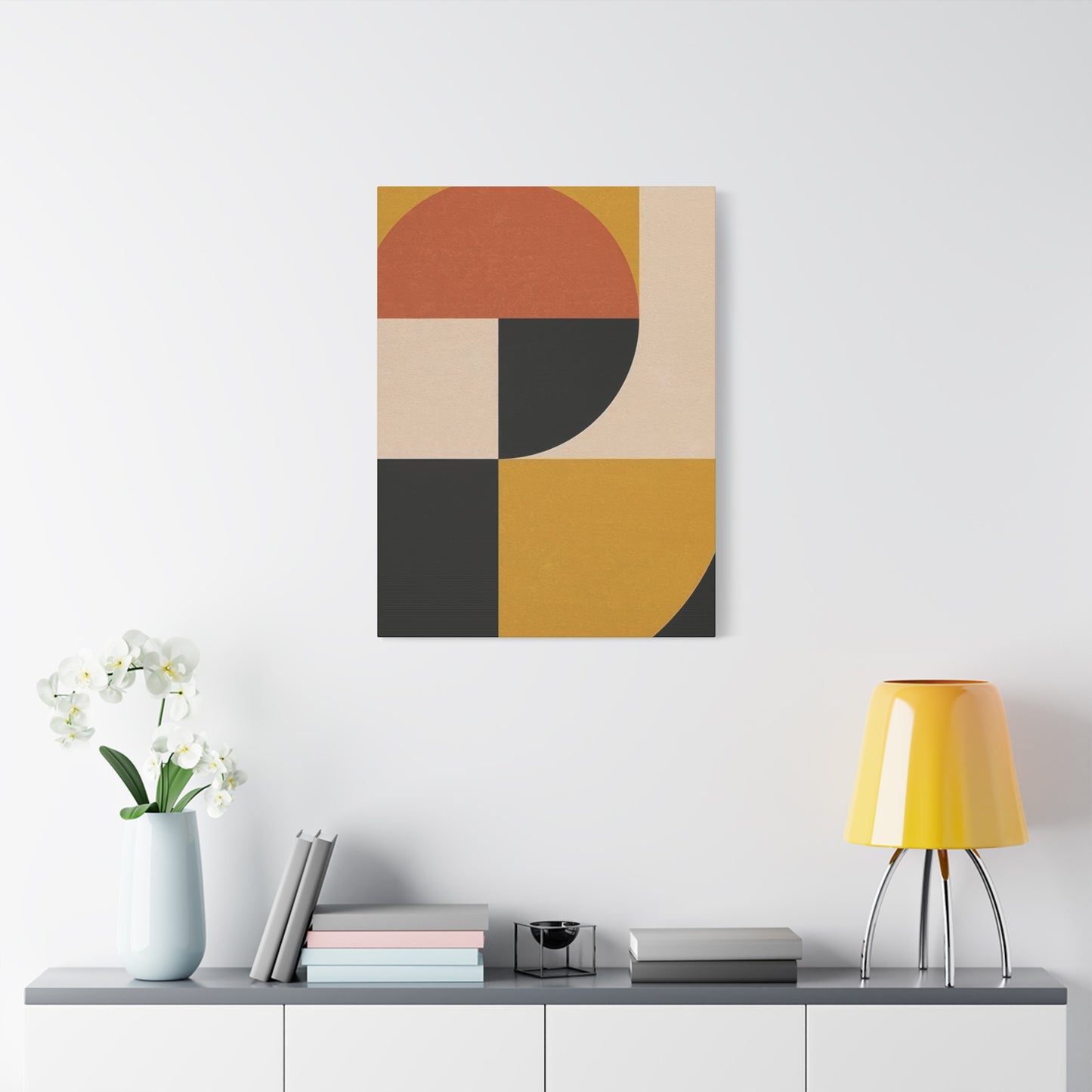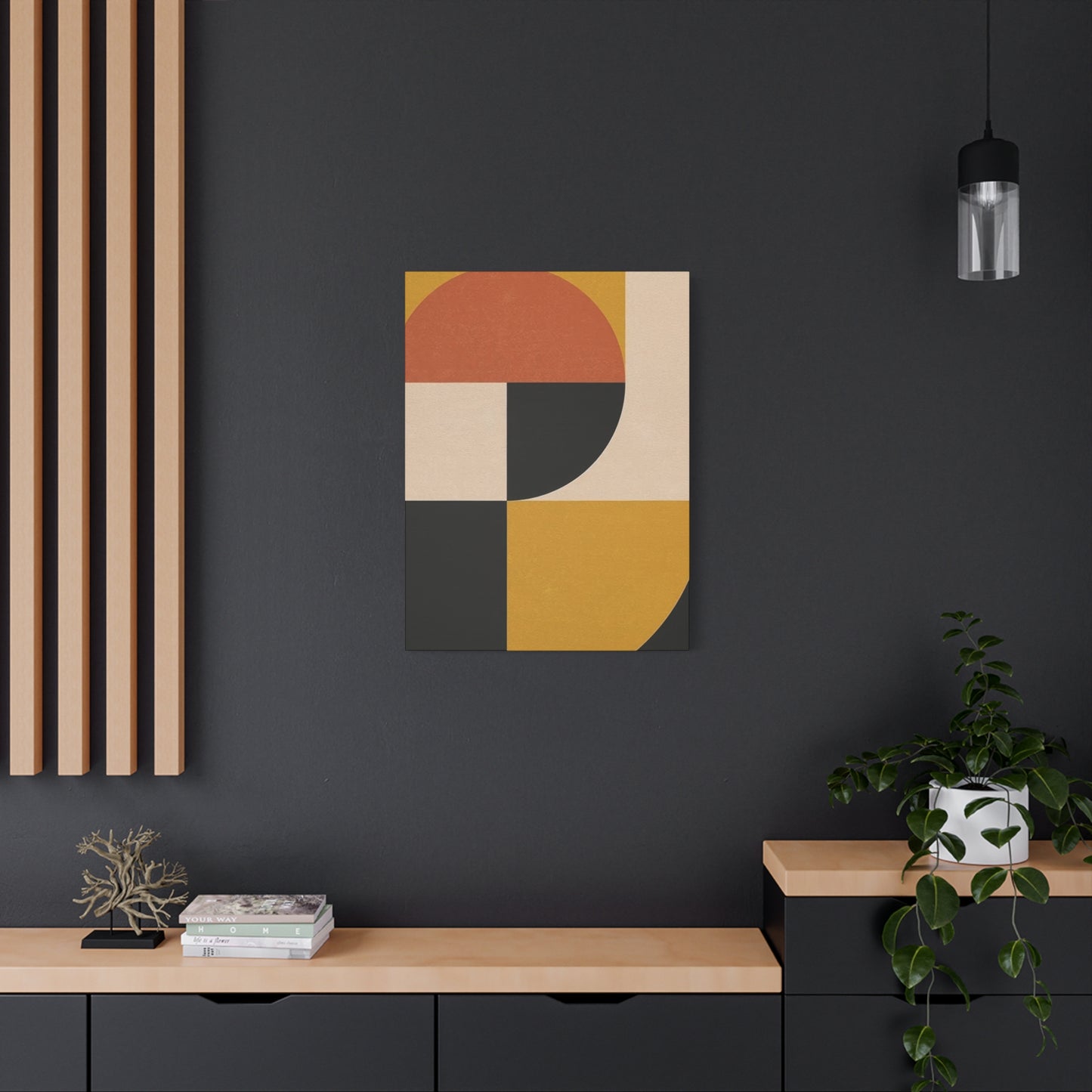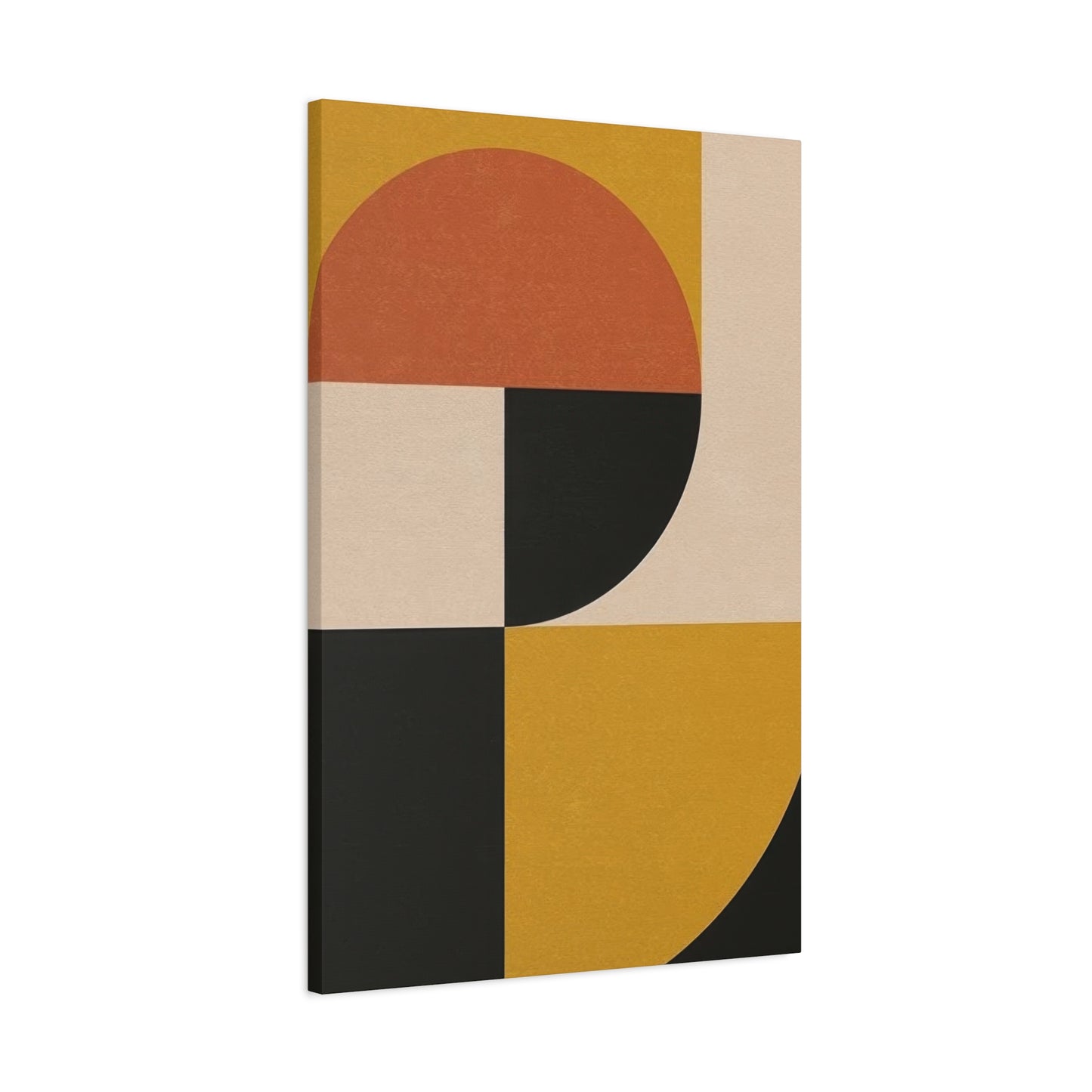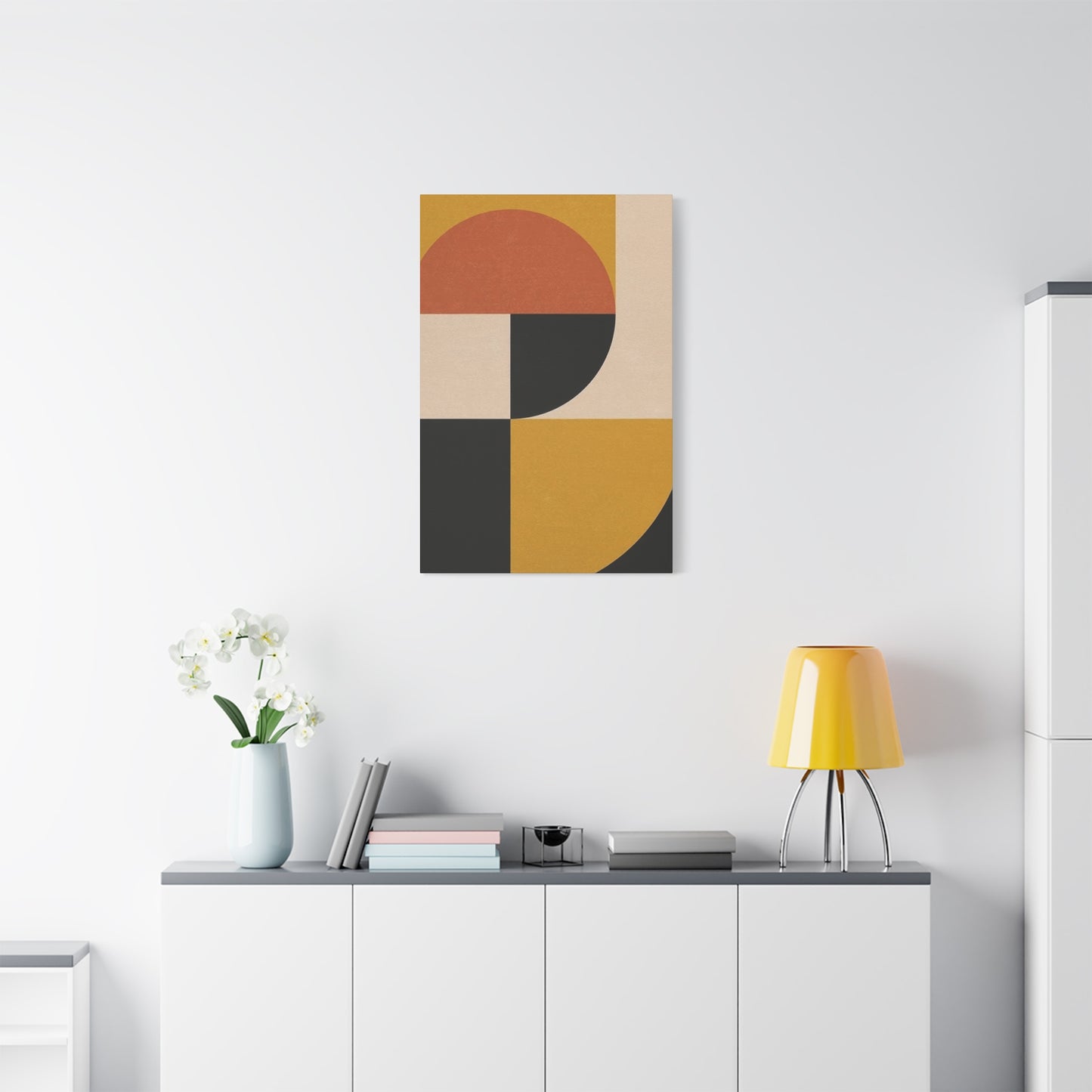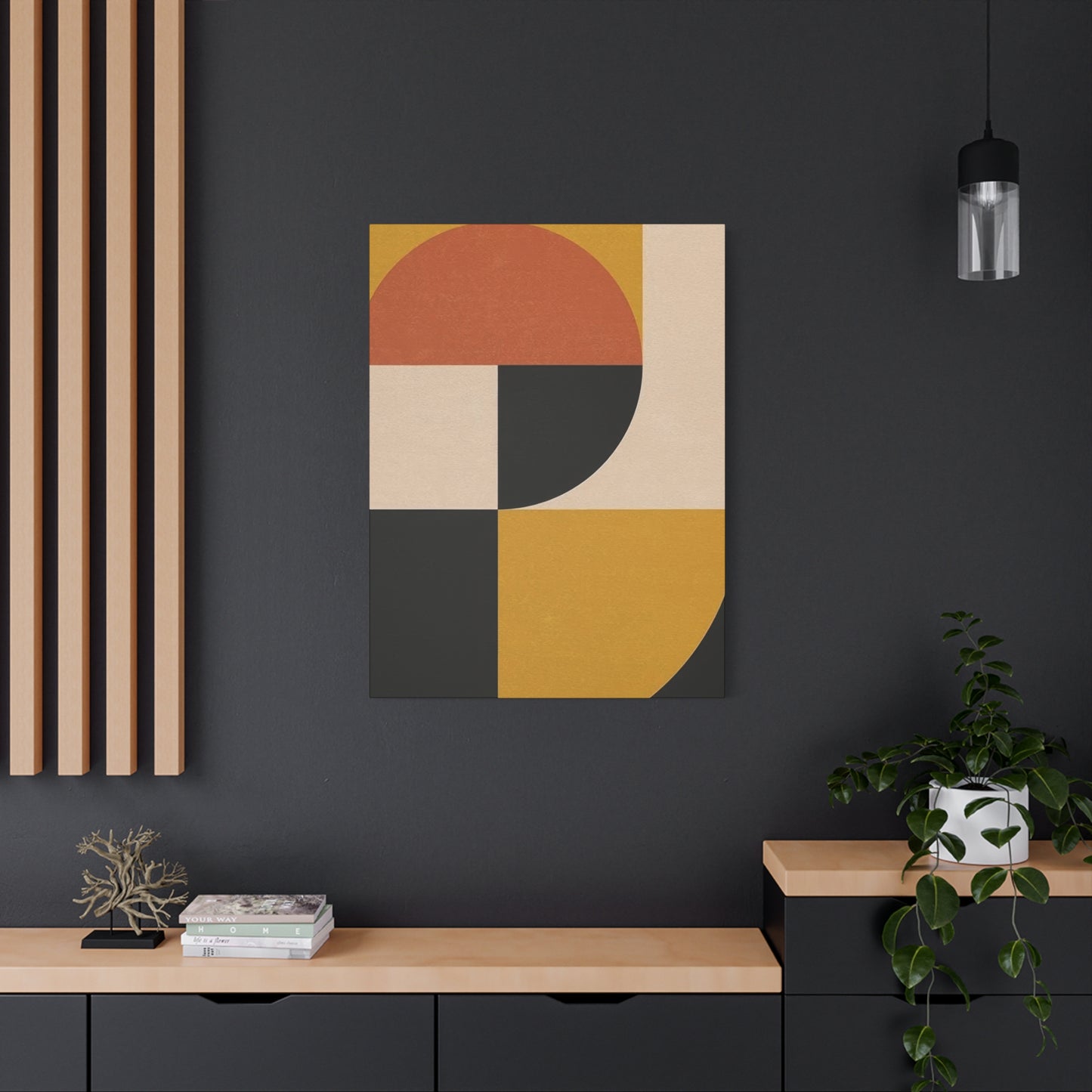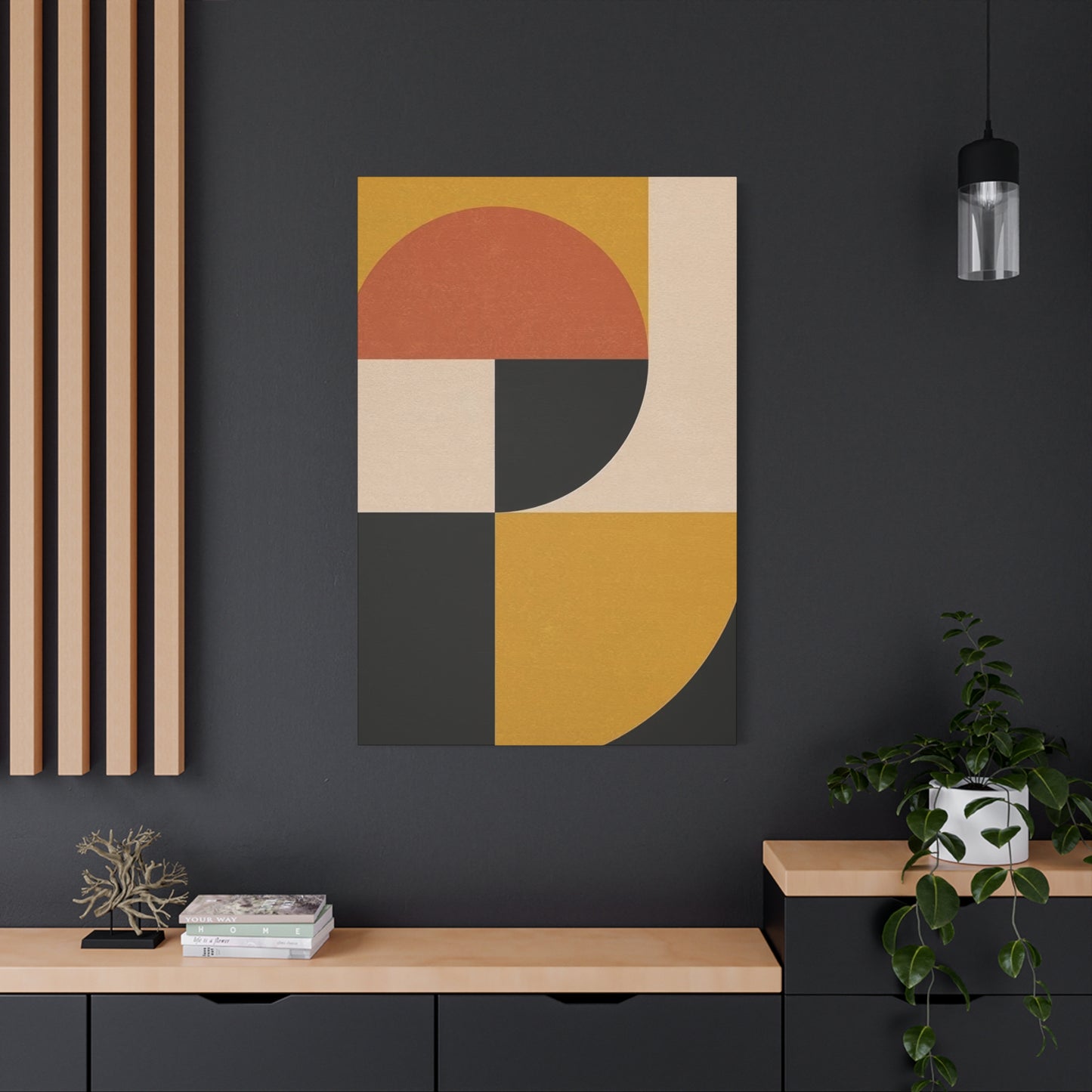Breaking Boundaries with Modern Abstract Geometric Shapes Wall Art: A Fusion of Art and Architecture
The world of interior design has witnessed a remarkable transformation in recent years, with abstract geometric shapes wall art canvas prints emerging as one of the most sought-after decorative elements for modern living spaces. These striking visual compositions blend mathematical precision with artistic creativity, offering homeowners and design enthusiasts an opportunity to infuse their environments with contemporary sophistication and visual intrigue. The popularity of geometric wall art has transcended mere trends, establishing itself as a fundamental component of modern aesthetic expression that resonates with diverse design sensibilities and personal preferences.
Canvas prints featuring abstract geometric patterns represent more than simple decorative accessories; they embody a philosophical approach to space organization and visual harmony. These artistic creations draw inspiration from various sources, including mathematical principles, architectural elements, natural formations, and digital design innovations. The geometric forms manifest in countless variations, from minimalist line compositions to complex polygonal arrangements, each offering unique opportunities for visual storytelling and spatial enhancement.
The appeal of geometric wall art lies in its remarkable versatility and ability to complement virtually any interior design scheme. Whether adorning the walls of a sleek metropolitan apartment, a cozy suburban home, a professional office space, or a creative studio environment, these canvas prints demonstrate an inherent adaptability that few other decorative elements can match. The clean lines, balanced compositions, and thoughtful color combinations characteristic of geometric art create focal points that draw the eye without overwhelming the senses, achieving a delicate equilibrium between presence and subtlety.
Contemporary designers and homeowners increasingly recognize the transformative power of well-chosen geometric wall art. These pieces function as visual anchors that tie together various design elements within a room, creating cohesion among furniture selections, color schemes, and architectural features. The structured nature of geometric patterns provides a sense of order and intentionality to living spaces, while the abstract qualities introduce elements of mystery and interpretation that engage viewers on multiple levels.
The production quality of modern canvas prints has reached unprecedented heights, with advanced printing technologies enabling the reproduction of intricate geometric designs with exceptional clarity and color fidelity. High-resolution digital printing techniques capture every nuance of the original artwork, from subtle gradations in tone to sharp contrasts between adjacent shapes. The canvas material itself contributes to the overall aesthetic appeal, offering a textured surface that adds depth and dimensionality to the printed image, creating a more engaging visual experience than flat paper prints or poster reproductions.
Collecting and displaying geometric wall art has become an accessible form of art appreciation for individuals across various economic backgrounds. While original paintings by renowned artists command premium prices, high-quality canvas prints offer an affordable alternative that maintains artistic integrity and visual impact. This democratization of art has enabled more people to curate personal collections that reflect their aesthetic preferences and contribute to the creation of inspiring living environments.
Understanding the Visual Language of Geometric Wall Art
The visual language of geometric wall art communicates through fundamental shapes, lines, angles, and spatial relationships that have captivated human imagination throughout history. These basic building blocks of visual composition combine in infinite variations to create designs ranging from straightforward simplicity to breathtaking complexity. Understanding this visual vocabulary enhances appreciation for geometric art and informs more thoughtful selection and placement decisions.
Circles and curves in geometric compositions introduce elements of softness and fluidity, counterbalancing the rigidity of angular forms. These rounded shapes evoke feelings of completeness, continuity, and harmony, often serving as focal points within larger compositions. When incorporated into abstract designs, circular elements create visual rhythms that guide the viewer's eye through the artwork in a smooth, natural progression.
Triangles contribute dynamic energy to geometric compositions through their inherent directionality and sense of movement. Pointing upward, downward, or to the sides, triangular forms create vectors of visual force that activate space and generate tension or balance depending on their arrangement. The sharp angles of triangles introduce elements of precision and decisiveness, making them particularly effective in designs intended to convey strength, ambition, or forward momentum.
Squares and rectangles establish stability and structure within geometric compositions, providing frameworks that organize other elements and create perceptible order. These quadrilateral forms align naturally with architectural features found in most interior spaces, including windows, doorways, and furniture outlines, facilitating visual integration between wall art and surrounding environment. The right-angled corners of squares and rectangles communicate reliability and groundedness, qualities that resonate with viewers seeking visual tranquility.
Polygons with five or more sides introduce mathematical sophistication and visual complexity to geometric designs. Pentagons, hexagons, octagons, and more elaborate polygonal forms create intricate patterns that reward sustained observation, revealing new relationships and details with each viewing. These complex shapes often appear in tessellated arrangements, where identical or complementary forms fit together without gaps, producing mesmerizing repetitive patterns that demonstrate mathematical elegance.
The interplay between positive shapes and negative space constitutes another crucial aspect of geometric visual language. Thoughtful designers recognize that the areas between and around geometric forms contribute as significantly to overall composition as the shapes themselves. Negative space provides breathing room that prevents visual overcrowding while establishing contrast that allows individual elements to maintain distinct identities within the larger composition.
Color relationships within geometric wall art dramatically influence emotional response and visual impact. Monochromatic schemes utilizing various shades and tints of a single hue create sophisticated, unified compositions that emphasize form over chromatic variety. Analogous color combinations employing adjacent hues on the color wheel produce harmonious blends that transition smoothly across the canvas. Complementary color pairings leverage maximum contrast to create vibrant, energetic compositions that command attention and stimulate visual excitement.
Scale and proportion considerations affect how geometric wall art interacts with its display environment. Large-scale compositions with bold, oversized shapes create dramatic statements that dominate wall space and define room character. Conversely, smaller-scale designs featuring intricate, detailed geometric elements invite closer inspection and create intimate viewing experiences. The relationship between individual geometric elements within a composition also matters, with varying sizes creating visual hierarchy that guides attention and establishes emphasis.
Symmetry and asymmetry offer contrasting approaches to geometric composition, each producing distinct aesthetic effects. Symmetrical arrangements create formal balance and classical harmony, appealing to viewers who appreciate orderliness and traditional design principles. Asymmetrical compositions generate dynamic tension and contemporary energy, attracting those who favor progressive aesthetics and unconventional visual solutions. Many successful geometric designs incorporate elements of both symmetry and asymmetry, achieving sophisticated balance through controlled contrast.
Geometric Art in Interior Design
The incorporation of geometric patterns into decorative arts spans millennia, with evidence of geometric ornamentation appearing in ancient civilizations across the globe. Early humans recognized the aesthetic appeal and symbolic significance of geometric forms, incorporating them into pottery, textiles, architecture, and ceremonial objects. These ancestral applications established foundations for contemporary geometric wall art, demonstrating the enduring human attraction to ordered, symmetrical visual arrangements.
Ancient Egyptian art and architecture extensively featured geometric patterns, particularly in hierarchical compositions that conveyed religious and social meanings. The pyramids themselves represent monumental geometric forms that have inspired artists and designers throughout subsequent history. Egyptian decorative arts incorporated triangular, rectangular, and circular motifs in repetitive patterns that adorned temple walls, tomb interiors, and portable objects, establishing precedents for geometric ornamentation that persist in modern design.
Islamic artistic traditions developed geometric pattern-making into an extraordinarily refined art form, creating intricate tessellated designs that adorned mosques, palaces, and manuscripts. The mathematical sophistication underlying Islamic geometric art demonstrates advanced understanding of symmetry, proportion, and spatial relationships. These complex patterns, often featuring interlocking stars, polygons, and arabesque elements, continue to influence contemporary geometric design, providing rich sources of inspiration for modern canvas print artists.
Greek and Roman civilizations contributed to geometric art traditions through architectural applications and mosaic work. The Greek key pattern, also known as meander, became an iconic geometric motif that remains popular in contemporary design. Roman floor mosaics demonstrated remarkable skill in creating geometric patterns using small tesserae, producing designs that ranged from simple checkerboard arrangements to elaborate compositions featuring multiple geometric forms in sophisticated color combinations.
The Arts and Crafts movement of the late nineteenth and early twentieth centuries renewed interest in geometric ornamentation as a reaction against industrial mass production and ornate Victorian aesthetics. Arts and Crafts designers embraced simplified geometric forms and stylized natural motifs, creating decorative arts that emphasized craftsmanship, materials, and functional beauty. This movement influenced subsequent design developments, including Art Nouveau and Art Deco, both of which incorporated geometric elements in distinctive ways.
Art Deco of the 1920s and 1930s celebrated geometric forms with unprecedented enthusiasm, featuring bold angular shapes, stepped patterns, and streamlined designs across architecture, interior design, and decorative arts. Art Deco geometric motifs conveyed modernity, glamour, and technological optimism, qualities that resonated with the cultural zeitgeist of the interwar period. The distinctive geometric vocabulary of Art Deco continues to inspire contemporary designers, and Art Deco-influenced geometric wall art remains popular among those drawn to vintage modern aesthetics.
The Bauhaus school revolutionized design education and practice in the early twentieth century, promoting principles that elevated geometric abstraction to new prominence. Bauhaus instructors and students explored relationships between basic geometric forms, primary colors, and fundamental design principles, producing influential artworks and theoretical frameworks that shaped modern design. The Bauhaus emphasis on functionality, simplicity, and geometric purity resonates strongly with contemporary minimalist aesthetics and continues to inform geometric wall art creation.
Mid-century modern design of the 1940s through 1960s embraced geometric forms in furniture, architecture, and decorative arts, establishing an aesthetic that has experienced remarkable resurgence in recent decades. Mid-century modern geometric patterns often featured organic curves combined with angular forms, creating dynamic compositions that balanced rationality with playfulness. The enduring popularity of mid-century modern design ensures continued demand for geometric wall art that channels this influential aesthetic movement.
The digital revolution transformed geometric art creation, providing designers with powerful tools for generating complex patterns, experimenting with color combinations, and producing variations with unprecedented speed and precision. Computer-aided design software enables the creation of geometric compositions that would be extraordinarily time-consuming or impossible to produce through traditional manual methods. Digital technology has democratized geometric art production, allowing more artists to explore this aesthetic realm and produce works for reproduction as canvas prints.
Contemporary geometric wall art draws upon this rich historical foundation while incorporating current design sensibilities, technological capabilities, and cultural influences. Today's geometric canvas prints reflect diverse inspirations, from ancient pattern-making traditions to cutting-edge digital design, offering consumers an extraordinary range of options for personalizing living and working spaces with visually compelling abstract compositions.
Color and Geometric Wall Art Selection
Color selection represents one of the most critical decisions when choosing geometric wall art, as color profoundly influences mood, perception, and overall room atmosphere. Understanding basic color psychology principles enables more informed artwork selection that aligns with intended emotional effects and functional requirements of different spaces. The interaction between geometric forms and color choices creates synergistic effects that amplify the impact of both elements.
Warm colors, including reds, oranges, and yellows, generate energy, warmth, and stimulation within interior spaces. Geometric wall art incorporating warm hues creates inviting, sociable atmospheres particularly appropriate for gathering spaces like living rooms, dining areas, and kitchens. Red geometric compositions convey passion, excitement, and vitality, making them suitable for spaces where dynamic activity and conversation occur. Orange geometric designs project friendliness, creativity, and enthusiasm, contributing cheerful energy to work and social environments. Yellow geometric artwork brings sunshine and optimism to rooms, elevating mood and creating positive associations.
Cool colors, encompassing blues, greens, and purples, promote calmness, relaxation, and contemplation. Blue geometric wall art creates serene environments ideal for bedrooms, bathrooms, and meditation spaces where tranquility is desired. Different blue values produce varying effects, with navy communicating sophistication and stability while lighter blues evoke openness and airiness. Green geometric compositions connect interior spaces with nature, promoting balance, renewal, and harmony. Purple geometric artwork combines the calming qualities of blue with the energy of red, creating mysterious, luxurious atmospheres particularly effective in creative spaces.
Neutral colors, including black, white, gray, beige, and brown, provide versatile foundations that complement diverse design schemes while allowing geometric forms to take visual precedence. Black and white geometric wall art creates timeless elegance through maximum contrast, producing striking compositions that work in virtually any setting. Gray geometric designs offer sophisticated subtlety, ranging from soft, delicate tones to bold, dramatic charcoals. Beige and taupe geometric artwork provides warmth without intensity, creating comfortable, approachable environments. Earth tones in geometric compositions ground spaces in natural warmth while maintaining contemporary aesthetic sensibilities.
Monochromatic color schemes employ multiple shades and tints of a single hue, creating cohesive compositions that emphasize tonal variation and geometric form rather than chromatic diversity. These unified color approaches produce sophisticated, harmonious artworks that integrate seamlessly into existing color schemes without introducing competing chromatic elements. Monochromatic geometric wall art appeals to minimalist sensibilities while offering surprising visual richness through subtle gradations and textural variations.
Analogous color combinations utilize two to four colors adjacent on the color wheel, creating harmonious blends that transition smoothly without jarring contrast. Blue-green-teal combinations evoke aquatic serenity, while orange-red-pink palettes generate warmth and energy. Analogous schemes in geometric wall art produce visually comfortable compositions that feel naturally related, making them accessible choices for those uncertain about bold color mixing.
Complementary color pairings leverage colors opposite on the color wheel to create maximum chromatic contrast and visual vibration. Blue and orange, red and green, yellow and purple exemplify complementary relationships that generate dynamic energy when combined in geometric compositions. These high-contrast combinations demand attention and create focal points that dominate visual fields, making them excellent choices for accent walls and spaces where bold statements are desired.
Triadic color schemes employ three colors equally spaced around the color wheel, creating balanced yet vibrant combinations. Red-yellow-blue and orange-green-purple represent classic triadic relationships that offer chromatic variety while maintaining visual equilibrium. Geometric wall art utilizing triadic color schemes achieves complexity without chaos, appealing to viewers who appreciate colorful designs with underlying organizational logic.
Metallic accents in geometric wall art introduce reflective elements that capture and redirect light, creating dynamic visual effects that change with viewing angle and lighting conditions. Gold geometric accents convey luxury, warmth, and timeless elegance, while silver and chrome communicate modernity, precision, and cool sophistication. Copper and bronze metallic elements bridge warm and cool aesthetics, offering versatility that complements diverse color palettes.
Color saturation levels significantly impact visual impact and emotional resonance. Highly saturated colors appear intense and vibrant, commanding attention and projecting energy. Desaturated or muted colors offer subtlety and sophistication, creating calmer atmospheres that allow other design elements to share visual prominence. Geometric wall art is available across the full saturation spectrum, enabling precise matching of artwork intensity to room requirements and personal preferences.
Size Considerations and Proportional Relationships
Selecting appropriately sized geometric wall art requires careful consideration of wall dimensions, room proportions, viewing distances, and relationships with surrounding furniture and architectural features. Proper scale creates visual harmony and ensures artwork makes intended impact without overwhelming space or appearing insignificant within the display environment. Understanding proportional principles guides effective artwork sizing decisions.
Single large-scale canvas prints create bold focal points that anchor room design and establish visual hierarchy. These substantial pieces typically measure forty inches or larger along the longest dimension, providing commanding presence that draws immediate attention. Large geometric wall art works particularly well above sofas, beds, and dining tables, where substantial wall space requires visual weight to maintain balance. The oversized scale allows viewers to appreciate geometric forms from across rooms while revealing additional details upon closer inspection.
Medium-sized canvas prints, typically ranging from twenty to forty inches, offer versatility suitable for diverse applications. These moderately proportioned pieces work effectively in various locations, including hallways, office spaces, bedrooms, and grouped arrangements. Medium geometric wall art provides significant visual presence without dominating environments, making it appropriate for rooms with multiple competing focal points or where subtler aesthetic approaches are preferred.
Small-scale canvas prints, generally measuring under twenty inches, excel in intimate spaces, grouped collections, and locations where delicate visual touches are desired. These compact pieces work effectively in bathrooms, entryways, closets, and as components within gallery wall arrangements. Small geometric artwork invites close viewing and creates opportunities for detailed observation, rewarding sustained attention with intricate pattern revelations.
The rule of thirds provides useful guidance for determining appropriate artwork width relative to furniture dimensions. According to this principle, wall art should span approximately two-thirds to three-quarters the width of furniture pieces positioned below it. Following this guideline ensures visual balance and prevents artwork from appearing either overwhelmingly large or insignificantly small relative to supporting furniture. This proportional relationship creates cohesive visual units that read as intentionally composed rather than randomly placed.
Gallery wall arrangements combine multiple pieces in coordinated compositions that collectively create substantial visual impact. These multi-piece installations allow for creative expression through varied sizes, orientations, and arrangements while providing opportunities to develop complex geometric narratives across multiple canvases. Gallery walls accommodate pieces of varying dimensions, unified through consistent framing, complementary color schemes, or related geometric themes. The cumulative effect of gallery wall groupings often exceeds the impact of single large pieces while offering greater flexibility and personal customization.
Vertical orientation emphasizes height and draws eyes upward, creating impressions of elevated ceilings and expanded vertical space. Vertically oriented geometric canvas prints work effectively in narrow wall spaces, beside doorways, and in rooms with low ceilings that benefit from visual elevation. The vertical format naturally accommodates certain geometric compositions, particularly those featuring stacked elements or ascending patterns.
Horizontal orientation emphasizes width and creates calming, grounded visual effects. Horizontally oriented geometric wall art naturally suits spaces above sofas, beds, and console tables, where width predominates. The horizontal format accommodates panoramic geometric compositions and designs featuring lateral movement or expansion. Wide horizontal pieces visually expand narrow rooms and balance tall architectural features.
Square formats offer balanced, stable compositions that work effectively in diverse locations. Square geometric canvas prints feel neither vertically nor horizontally dominant, creating neutral visual weight that adapts to various display contexts. The equilateral proportions of square formats complement geometric subject matter, reinforcing the mathematical precision inherent in geometric art.
Diptychs and triptychs divide single compositions across multiple adjacent panels, creating modular installations that span substantial wall space while maintaining manageable individual panel sizes. These multi-panel arrangements offer installation flexibility and create visual interest through panel divisions that become part of the overall composition. Geometric designs translate particularly well to multi-panel formats, with forms extending across panel boundaries or creating rhythmic repetitions across sections.
Viewing distance considerations affect optimal artwork size selection. Pieces intended for viewing from across large rooms should feature larger scale and bolder geometric forms that remain visually effective at distance. Artwork positioned in intimate spaces where close viewing predominates can incorporate smaller scale and finer detail without sacrificing impact. Considering typical viewing distances during selection ensures chosen pieces deliver intended visual experiences in actual display contexts.
Material Quality and Canvas Print Construction
The physical quality of canvas prints significantly impacts appearance, longevity, and overall satisfaction with geometric wall art purchases. Understanding construction elements, material variations, and quality indicators enables informed selection of pieces that meet aesthetic expectations while providing lasting value. Investment in well-constructed canvas prints ensures geometric artwork maintains visual appeal through years of display.
Canvas substrate quality represents the foundation of durable, attractive prints. Premium cotton canvas offers superior texture, archival stability, and ink receptivity compared to synthetic alternatives. Cotton fibers create natural surface variations that enhance printed images with subtle textural dimension. Polyester canvas provides cost-effective alternatives with resistance to moisture and stretching, though generally lacking the premium feel and archival properties of cotton. Blended canvases combine cotton and synthetic fibers, balancing quality and economy.
Canvas weight or thickness affects durability, appearance, and handling characteristics. Heavyweight canvases, typically measuring three hundred to four hundred grams per square meter, provide substantial feel, resist sagging, and better withstand handling during installation. Middleweight canvases offer adequate durability for most applications while remaining economical. Lightweight canvases may appear thin and less substantial, with greater susceptibility to stretching distortions and handling damage.
Coating treatments applied to canvas surfaces influence ink adhesion, color vibrancy, and protective qualities. Quality canvas prints utilize optimized coatings that enable accurate color reproduction while protecting printed surfaces from environmental factors. Inadequate or absent coatings may result in ink absorption issues, color shifting, and reduced longevity. Premium coatings enhance water resistance and facilitate cleaning, extending usable life.
Stretcher bar construction provides structural support that maintains canvas tension and shape. Solid wood stretcher bars offer superior strength and stability compared to composite materials. Thicker stretcher bars, typically measuring one and one-half to two inches deep, create substantial gallery-wrapped presentations with professional appearance. Beveled or rounded stretcher edges prevent impression marks from transferring through canvas to printed surfaces. Corner joinery quality affects structural integrity, with mortise-and-tenon or finger joints providing stronger connections than simple butt joints.
Gallery wrap construction extends printed images around stretcher bar edges, eliminating visible canvas margins and creating finished appearances suitable for frameless display. Quality gallery wraps carefully align images around corners without distortion or abrupt discontinuities. Mirror wraps reflect edge portions of images back around sides, creating continuous visual flow. Solid color wraps extend selected colors around edges for clean, simple presentations. Image wraps continue printed designs around sides, showcasing geometric patterns from multiple viewing angles.
Staple placement affects canvas appearance and influences framing options. Back-stapled canvases position fasteners on rear surfaces, creating clean edges ideal for frameless display or allowing frames to completely conceal attachment hardware. Side-stapled canvases place fasteners along stretcher bar edges, simplifying initial stretching but requiring frames to cover visible staples. Top-quality construction ensures staples sit flush without protruding or creating unsightly bulges.
Protective finishing treatments safeguard canvas prints from environmental damage, including ultraviolet light exposure, moisture, dust, and physical contact. Spray varnishes or laminate coatings provide transparent protective barriers that preserve color accuracy while facilitating cleaning. Glossy finishes enhance color saturation and create reflective surfaces that add depth. Matte finishes reduce glare and reflections while creating subtle, sophisticated appearances. Satin finishes balance these qualities, offering moderate sheen without excessive reflectivity.
Print resolution determines image clarity and ability to render fine geometric details. High-resolution printing, typically three hundred dots per inch or greater, captures crisp edges, smooth gradations, and intricate patterns essential for geometric artwork. Lower resolution printing may produce visible pixelation, soft edges, and inability to render fine details, particularly evident when viewing from close distances. Resolution requirements increase with canvas size, as larger prints require more data to maintain clarity across expanded dimensions.
Ink quality directly impacts color accuracy, vibrancy, fade resistance, and archival longevity. Professional-grade pigment-based inks offer superior lightfastness compared to dye-based alternatives, resisting fading from ultraviolet exposure for decades when properly displayed. Archival ink formulations ensure geometric wall art maintains color integrity throughout years of display, protecting investment value. Inferior inks may shift color or fade noticeably within months, particularly when exposed to direct sunlight.
Placement Strategies for Maximum Visual Impact
Strategic placement of geometric wall art maximizes aesthetic impact while creating harmonious relationships with architectural features, furniture arrangements, and lighting conditions. Thoughtful positioning transforms canvas prints from simple decorative additions into integral design elements that enhance overall spatial composition and occupant experience. Understanding placement principles guides effective artwork display decisions.
Eye-level hanging represents the foundational placement principle, positioning artwork centers approximately fifty-seven to sixty inches from floor level. This standard height aligns with average human eye level when standing, creating comfortable viewing geometry that neither strains necks upward nor forces downward gazes. Gallery and museum professionals universally apply this principle, which translates effectively to residential installations. Adjustments may accommodate individual heights or specific viewing contexts, such as seating areas where typical viewing occurs from lower positions.
Above-furniture placement requires coordinating artwork positioning with underlying furniture dimensions and functions. When hanging geometric wall art above sofas, position canvas lower edges six to twelve inches above furniture backs, creating visual connection while maintaining separation. This spacing allows artwork and furniture to read as related yet distinct elements rather than appearing accidentally juxtaposed. Similar principles apply to artwork above beds, consoles, and other furniture pieces, with spacing adjusted according to furniture height and visual weight.
Focal wall designation concentrates visual attention on specific surfaces through prominent artwork display, bold color treatments, or architectural emphasis. Geometric wall art serves effectively as focal wall centerpiece, drawing attention and establishing visual hierarchy within rooms. Ideal focal walls include surfaces visible from room entrances, those backing primary furniture arrangements, or walls lacking competing architectural features like fireplaces or large windows. Limiting each room to one primary focal point prevents visual confusion and maintains clear design intention.
Corner placement utilizes often-neglected intersection spaces, transforming dead zones into activated visual areas. Geometric canvas prints positioned in corners add interest to transitional spaces while softening harsh angular junctions. Corner installations work particularly well in open floor plans where traditional wall space is limited, and in rooms with unusual dimensions that create awkward spatial relationships. Angled corner mounting adds dimensional variation that emphasizes geometric artwork's structured qualities.
Hallway galleries transform circulation spaces into exhibition zones that showcase geometric print collections. Long hallways accommodate multiple pieces arranged in linear progressions, creating visual rhythm that guides movement through spaces. Consistent spacing between pieces, typically matching individual canvas dimensions, produces orderly arrangements that feel intentionally curated. Alternating sizes or introducing purposeful spacing variations can create more dynamic compositions that maintain interest across extended displays.
Stairwell installations present unique challenges and opportunities for geometric wall art display. Rising sightlines along staircases require adjusted hanging heights that maintain consistent visual relationships as viewers ascend or descend. Arranging multiple geometric prints in ascending or descending size progressions can reinforce directional movement and create engaging visual narratives. Ensuring adequate clearance prevents inadvertent contact during stairway navigation while maintaining appropriate viewing distances.
Lighting integration dramatically influences geometric wall art appearance and impact. Natural light from windows creates dynamic viewing conditions that change throughout the day as sun angles shift and weather patterns alter illumination quality. Position geometric prints perpendicular to primary light sources to minimize glare and reflections that obscure printed details. Artificial lighting offers controllable illumination that can be specifically designed to enhance artwork display. Picture lights mounted above canvas prints provide focused illumination that emphasizes colors and details while creating sophisticated presentation. Track lighting systems allow flexible positioning of multiple light sources that can highlight several pieces within gallery wall arrangements. Avoiding direct sunlight exposure protects prints from ultraviolet damage that causes premature fading.
Symmetrical arrangements create formal balance through mirrored positioning of identical or similar geometric prints flanking central focal points. This classical approach suits traditional design aesthetics and rooms with inherent symmetry in architectural features or furniture placement. Symmetrical geometric wall art installations convey orderliness, stability, and intentionality while creating predictable visual comfort.
Asymmetrical arrangements generate dynamic visual interest through unequal distribution of elements that achieve balance through varying sizes, colors, and positions. This contemporary approach suits modern design aesthetics and allows greater flexibility in accommodating existing spatial constraints. Asymmetrical geometric print arrangements feel more casual and creative while requiring more sophisticated compositional understanding to achieve successful balance.
Grouping strategies for multiple geometric prints range from tight grid arrangements with minimal spacing to loose constellations with substantial intervening wall space. Tight groupings create unified visual blocks that function as single large-scale elements, while loose arrangements maintain individual piece identity within coordinated collections. Consistent inter-piece spacing ranging from two to six inches creates cohesive groupings, while varied spacing introduces dynamic irregularity. Establishing level horizontal alignments or vertical column alignments provides organizational structure that prevents chaotic appearance even within asymmetrical arrangements.
Complementary Interior Design Styles
Geometric wall art demonstrates remarkable adaptability across diverse interior design styles, from classic traditional to cutting-edge contemporary. Understanding how geometric canvas prints harmonize with different aesthetic approaches enables selection of pieces that enhance rather than conflict with existing design schemes. Strategic style coordination ensures geometric artwork feels integrated rather than arbitrarily added to interior environments.
Minimalist design embraces geometric wall art as natural extension of style principles emphasizing simplicity, functionality, and reduction to essential elements. Minimalist interiors benefit from geometric prints featuring clean lines, limited color palettes, and uncluttered compositions that reflect broader aesthetic values. Monochromatic geometric artwork in black, white, and gray tones reinforces minimalist color restraint while providing visual interest through form rather than chromatic variety. Simple geometric shapes presented against abundant negative space create contemplative focal points that maintain minimalist serenity.
Scandinavian design incorporates geometric wall art that balances clean modern lines with natural warmth characteristic of Nordic aesthetics. Light, neutral backgrounds with geometric patterns in muted blues, soft grays, and natural wood tones complement Scandinavian interiors' emphasis on brightness and connection with nature. Geometric prints featuring organic-geometric hybrids, where structured patterns incorporate natural inspiration, bridge Scandinavian design's dual emphasis on modern functionality and natural authenticity.
Industrial style accommodates geometric wall art with raw, utilitarian character reflecting warehouse aesthetics. Bold geometric prints in distressed appearances, exposed mechanical themes, or stark black-and-white contrasts complement industrial interiors featuring exposed brick, metal fixtures, and reclaimed wood. Geometric canvas prints mounted on visible industrial-style hanging systems rather than traditional picture hanging methods can reinforce authentic warehouse gallery atmosphere.
Mid-century modern design naturally pairs with geometric wall art reflecting 1950s and 1960s aesthetic sensibilities. Geometric prints featuring atomic-age motifs, starburst patterns, boomerang shapes, and retro color palettes in orange, avocado, turquoise, and gold capture mid-century modern spirit. Combining geometric and organic forms in dynamic compositions reflects period design philosophy balancing rational modernism with humanistic organic elements.
Contemporary style embraces geometric wall art showcasing current design trends, innovative compositions, and experimental approaches. Contemporary interiors accommodate bold geometric statements, unusual color combinations, and unconventional materials that push aesthetic boundaries. Contemporary geometric prints may incorporate digital design effects, gradient blends, photographic elements, or mixed media approaches that reflect evolving artistic possibilities.
Bohemian design accommodates geometric wall art with ethnic, tribal, or global inspiration reflecting boho aesthetic's eclectic, well-traveled character. Geometric prints featuring Moroccan tile patterns, Indian mandala forms, African textile motifs, or South American weaving designs complement bohemian interiors' layered textures and rich color palettes. Combining multiple geometric prints from diverse cultural sources creates cosmopolitan collections that celebrate global artistic traditions.
Transitional design bridges traditional and contemporary aesthetics through balanced combinations of classic and modern elements. Geometric wall art in transitional spaces features timeless geometric forms presented with contemporary simplicity, avoiding extreme minimalism or ornate traditionalism. Neutral and sophisticated color palettes in grays, creams, and muted accent colors enable geometric prints to complement both traditional furniture and contemporary architectural features within transitional environments.
Coastal and nautical design incorporates geometric wall art featuring aquatic color palettes, maritime-inspired patterns, and breezy compositions reflecting seaside lifestyle. Blue-and-white geometric prints, coral-inspired angular patterns, and wave-form geometric abstractions complement coastal interiors while maintaining sophisticated modern sensibility. Combining geometric precision with oceanic inspiration creates refined nautical aesthetics that avoid clichéd decoration.
Art Deco revival embraces geometric wall art celebrating 1920s and 1930s glamour through luxurious materials, bold angular forms, and dramatic color contrasts. Geometric prints featuring gold metallic accents, black-and-cream sophistication, chevron patterns, and sunburst motifs capture Art Deco opulence. Rich jewel tones including emerald, sapphire, and ruby in geometric compositions create period-appropriate drama suitable for Art Deco-inspired interiors.
Eclectic style accommodates virtually any geometric wall art through intentional combination of diverse elements unified by personal curatorial vision. Eclectic interiors showcase geometric prints alongside disparate artwork styles, creating personalized collections that reflect individual taste rather than adherence to single aesthetic doctrine. Success in eclectic geometric art display requires unifying elements such as consistent framing, complementary color threads, or thematic connections that provide coherence within diversity.
Color Coordination with Existing Decor
Integrating geometric wall art into existing color schemes requires understanding relationships between artwork chromatics and surrounding environmental colors. Successful color coordination creates visual harmony while allowing geometric prints to make intended statements without creating jarring discord. Strategic color selection ensures new artwork additions enhance rather than disrupt established design palettes.
Matching dominant colors connects geometric wall art directly with primary room colors, creating cohesive visual relationships that feel intentional and unified. Selecting prints featuring significant proportions of wall colors, upholstery hues, or major decorative element colors ensures artwork reads as integrated component rather than isolated addition. Perfect color matching is unnecessary and often undesirable; approximate matching within the same color family creates connection while maintaining visual interest through subtle variation.
Extracting accent colors from existing decor provides opportunities to introduce geometric wall art that highlights and amplifies minor color notes already present in spaces. Small color touches appearing in throw pillows, decorative objects, or textile patterns can be expanded and emphasized through geometric prints featuring these accent hues prominently. This approach creates sophisticated color echoes that demonstrate intentional design coordination while adding visual complexity.
Complementary color introduction through geometric wall art can energize neutral or monochromatic spaces by adding controlled chromatic contrast. Rooms dominated by beige, gray, or white benefit from geometric prints featuring strategic color injections that enliven without overwhelming. Selecting complementary colors already present in minor amounts ensures new color introductions feel related to existing palette rather than arbitrary additions.
Neutral geometric prints offer fail-safe options that coordinate with virtually any existing color scheme without requiring careful color matching. Black, white, and gray geometric artwork provides visual interest through form, pattern, and tonal variation while remaining chromatically agnostic. Neutral geometric prints work particularly well in frequently redecorated spaces or rooms where flexibility for future color changes is desired.
Analogous color harmony extends existing color schemes through related hues that create smooth visual transitions. If room features blue as dominant color, geometric prints incorporating blue-green and blue-violet analogous hues expand chromatic palette while maintaining harmonious relationships. This approach adds color complexity and visual interest without introducing jarring contrasts that disrupt existing color unity.
Triadic color relationships can be established or reinforced through geometric wall art selection. Identifying existing room colors and selecting geometric prints featuring colors that complete triadic relationships creates balanced chromatic distribution. This sophisticated color approach demonstrates advanced design understanding while creating vibrant yet stable color environments.
Tonal coordination focuses on value relationships rather than specific hues, creating harmony through consistent light-dark distributions. Geometric prints matching the overall tonal character of rooms, whether predominantly light and airy or dramatically dark and moody, maintain atmospheric consistency. Introducing contrasting tonal values through geometric artwork creates focal emphasis that draws attention through lightness-darkness contrast rather than chromatic difference.
Seasonal color rotation allows geometric wall art to reflect changing environmental conditions and occupant mood preferences. Maintaining collections of geometric prints in different color schemes enables periodic artwork exchange that refreshes room appearance without requiring comprehensive redecorating. Cool-toned geometric pieces for summer months and warm-toned alternatives for winter create subtle seasonal acknowledgment that maintains design interest.
Metallic accent integration through geometric prints containing gold, silver, copper, or bronze elements creates opportunities to coordinate with metallic finishes present in light fixtures, hardware, and decorative accessories. Matching metallic tones creates cohesive material relationships that demonstrate attention to detail. Mixing metallic tones, such as combining warm gold with cool silver, requires careful balance to avoid conflicting finishes.
Pattern scale coordination ensures geometric wall art patterns appropriately relate to other patterns present in rooms through textiles, wallcoverings, and decorative objects. Large-scale geometric prints complement small-scale background patterns, creating hierarchical pattern relationships that prevent visual confusion. Alternatively, maintaining consistent pattern scales throughout spaces creates unified rhythmic qualities that feel deliberately coordinated.
Thematic Geometric Patterns and Their Meanings
Geometric patterns have long been a significant part of design, influencing both visual appeal and the emotional atmosphere of a space. These patterns, with their precision and structure, go beyond mere decoration; they communicate messages, evoke emotions, and create ambiance. The various types of geometric patterns, such as circles, squares, triangles, and more intricate designs like chevrons or tessellations, carry unique aesthetic and symbolic meanings. By understanding these thematic variations, you can make informed decisions when selecting geometric wall art, ensuring it aligns with the atmosphere you wish to create and reflects personal values.
Circles are perhaps the most universal geometric shape. In many cultures, they represent unity, eternity, and completeness, as their shape has no beginning or end. In interior design, circular patterns often evoke feelings of calm and harmony, making them ideal for spaces meant for relaxation, like bedrooms or meditation rooms. The soft, rounded edges of circles can create a soothing flow, adding a sense of balance and stability to a room. Using circular patterns in wall art may also symbolize wholeness and interconnectedness, appealing to those who value unity and peace.
Squares and rectangles, with their straight lines and right angles, are symbols of structure, order, and stability. These shapes suggest reliability and are often associated with the grounded, practical aspects of life. Incorporating square or rectangular geometric patterns into a space can provide a sense of security and control, making them well-suited for workspaces or areas where focus and productivity are key. Their clean, rigid forms can also evoke a sense of sophistication and elegance when paired with modern minimalist designs. When used in wall art, squares may represent a grounded approach to life, order in chaos, or the beauty of simplicity.
Triangles, with their sharp points and angular structure, are often seen as symbols of strength, energy, and transformation. Depending on their orientation, triangles can evoke different meanings. An upward-pointing triangle is commonly associated with stability, growth, and masculinity, while a downward-pointing triangle can symbolize water, femininity, or introspection. Triangular patterns in wall art can energize a space, offering a dynamic, forward-moving feel. They work particularly well in more active, vibrant spaces like living rooms, home gyms, or areas designed for social interaction.
Hexagons and honeycomb patterns, characterized by their repetitive, interlocking shapes, represent unity and cooperation. They are often associated with nature and the idea of things working together in a seamless, efficient way. The hexagonal pattern is reminiscent of the natural world, like beehives or snowflakes, and evokes feelings of interconnectedness and collective effort. These patterns are excellent for creating a sense of harmony in modern interiors, especially in spaces meant to encourage collaboration or shared experiences. They also carry an air of sophistication and innovation, making them a fitting choice for contemporary spaces, offices, or creative hubs.
Tessellations, where shapes fit together without gaps or overlaps, represent harmony, completeness, and mathematical precision. These patterns often suggest continuity and the idea of endless possibilities. When used in wall art, tessellations can create a sense of movement and flow, making them ideal for rooms where energy and fluidity are important, like studios or living rooms designed for entertainment. Tessellations are also a nod to intellectual and artistic pursuit, perfect for spaces that celebrate creativity and abstract thought.
Chevron patterns, with their sharp, zigzagging lines, often carry connotations of progress, movement, and transformation. They are bold and dynamic, suggesting a sense of direction and forward momentum. The chevron pattern has become increasingly popular in modern interiors, where it can add a sense of rhythm and energy to a room. Depending on the size and placement of the pattern, chevrons can evoke anything from a sense of playfulness to a more serious, determined energy. This pattern works particularly well in spaces meant to inspire action, like home offices, study areas, or energetic social spaces.
Conclusion
The evolution of modern abstract geometric shapes wall art represents an exciting and dynamic intersection of art and architecture, where boundaries are continuously being broken, and new realms of visual expression are being explored. By merging geometric forms with abstract design, artists have created a form of wall art that not only challenges conventional norms but also redefines the relationship between space, structure, and aesthetic experience. This fusion of art and architecture creates a transformative visual language that speaks to the contemporary spirit, offering fresh perspectives on both the built environment and the world of creative expression.
Historically, geometric abstraction has been a significant part of the art world, dating back to early 20th-century movements like Cubism and Futurism. However, it is in the realm of modern wall art that geometric abstraction has truly evolved into a powerful tool for artistic exploration. Geometric shapes, often regarded as symbols of precision and order, are now used to evoke emotion, challenge perception, and play with spatial relationships. Through abstraction, the rigidity of geometry is softened and transformed into a fluid, dynamic expression of form and color, offering viewers a unique visual experience that blurs the lines between the built and the imagined.
Modern abstract geometric shapes wall art stands as a perfect reflection of how architecture influences artistic expression, and vice versa. Architects, who have long utilized geometric principles in their designs, have found inspiration in the clarity, structure, and balance inherent in these forms. In turn, artists have taken these same principles and applied them to their work, creating wall art that echoes the aesthetics of architectural spaces. Through the use of sharp angles, bold lines, and vibrant color contrasts, these artworks evoke the structured beauty of architectural forms while allowing for fluidity and creative freedom. This synergy not only enhances the visual appeal of a space but also invites the viewer to contemplate how the physical and emotional aspects of architecture and art coexist.
One of the most compelling aspects of modern abstract geometric shapes wall art is its ability to transcend the traditional boundaries of space. Unlike representational or figurative art, which relies on the depiction of recognizable forms or objects, geometric abstraction invites the viewer to engage with the art on a deeper, more conceptual level. The interplay of shapes, patterns, and colors creates a dynamic composition that shifts and evolves depending on the viewer’s perspective. Much like architecture, the art invites the audience to interpret and experience it in a variety of ways—whether as a harmonious balance of form, a striking contrast of color, or an exploration of structure and space. This sense of multi-dimensionality encourages viewers to engage with the artwork in an active, participatory way, transforming the passive act of viewing into an immersive experience.
Furthermore, the fusion of art and architecture through abstract geometric wall art also reflects a broader cultural shift toward minimalism, clean lines, and an appreciation for form over decoration. In contemporary interiors, where open spaces, light, and simplicity dominate design, abstract geometric shapes offer a way to inject energy and complexity into a room without overwhelming the space. These artworks add a modern, sophisticated touch, creating visual interest through the thoughtful arrangement of shapes and lines while maintaining a sense of order and tranquility. The balance between boldness and subtlety is key, as geometric abstraction conveys depth and meaning while aligning with the minimalist aesthetic that is increasingly popular in modern architecture and interior design.
In addition, the use of abstract geometric shapes allows artists to break free from the constraints of representational art and embrace experimentation. The possibilities are endless, as artists can manipulate shapes, textures, and colors to create compositions that challenge traditional notions of form and space. This freedom enables artists to push the boundaries of what wall art can be, creating pieces that are not only aesthetically pleasing but also thought-provoking. The versatility of geometric abstraction means it can adapt to a variety of contexts, from large-scale installations that dominate a room to smaller, more intimate works that invite closer inspection. Whether in a private residence, a corporate office, or a public space, modern abstract geometric shapes wall art brings a sense of vitality and intellectual engagement that transforms any environment.
In conclusion, modern abstract geometric shapes wall art is a powerful testament to the evolving relationship between art and architecture. By embracing the principles of geometry and abstraction, artists have created a unique form of expression that is both visually striking and conceptually rich. This fusion of disciplines challenges traditional artistic boundaries, offering viewers a fresh and dynamic perspective on the built environment. With its ability to transcend physical space and evoke emotional depth, modern geometric abstraction continues to break new ground in both art and design, making it a crucial and ever-evolving component of contemporary culture.

















